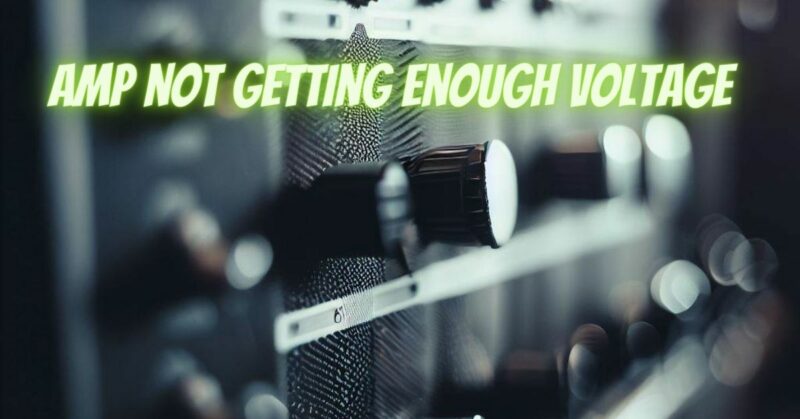Voltage is a critical factor in the proper functioning of amplifiers, as it determines the amount of electrical power available to drive speakers and produce sound. When an amplifier does not receive enough voltage, it can lead to various issues that affect its performance and the overall audio experience. In this article, we will explore what happens when an amp does not receive enough voltage, the consequences of this issue, and potential solutions to address it.
- Effects of Insufficient Voltage on Amplifiers
Amplifiers require a stable and sufficient voltage supply to deliver the required power to the speakers. When an amp does not receive enough voltage:
a. Reduced Output Power: Insufficient voltage can result in a reduced output power from the amplifier. As a result, the audio may sound weaker and lack the desired volume levels.
b. Signal Distortion: When an amplifier operates at lower voltages, it may struggle to reproduce the audio signal accurately. This can lead to signal distortion, causing the sound to become muddled, harsh, or unclear.
c. Diminished Dynamic Range: The dynamic range, which represents the difference between the softest and loudest sounds in an audio recording, may be compromised. Lower voltage can lead to a compressed dynamic range, affecting the overall audio quality.
d. Clipping and Overdriving: Insufficient voltage can cause the amplifier to clip and overdrive the audio signal. Clipping occurs when the output waveform is cut off at its peaks, resulting in distorted sound and potential damage to speakers.
e. Unreliable Performance: An amplifier not receiving enough voltage may become unstable and unreliable in its operation. It may exhibit inconsistent behavior, leading to an unpredictable audio experience.
- Common Causes of Low Voltage
Several factors can lead to an amplifier not receiving enough voltage:
a. Inadequate Power Supply: If the power supply connected to the amplifier does not provide enough voltage, the amplifier may not function optimally.
b. Long Cables: Lengthy or poorly designed power cables can cause voltage drop, especially when using amplifiers at a distance from the power source.
c. Insufficient Battery Capacity (for portable amplifiers): Portable amplifiers powered by batteries may experience low voltage if the batteries are nearing the end of their charge or if they are not providing enough power.
d. Overloaded Circuits: When multiple devices draw power from the same circuit, it can lead to voltage drops, affecting the performance of connected amplifiers.
- Solutions to Address Low Voltage Issues
To rectify low voltage problems and ensure proper amplifier performance, consider the following solutions:
a. Check Power Supply: Verify that the amplifier is connected to an appropriate power supply that meets its voltage requirements. Use high-quality power cables to minimize voltage drop.
b. Use a Dedicated Circuit: For professional audio setups or systems with multiple amplifiers, consider using a dedicated circuit for the amplifiers to prevent voltage drops due to overloaded circuits.
c. Check Battery Capacity: If using a portable amplifier with battery power, ensure the batteries are fully charged and capable of supplying the required voltage.
d. Voltage Regulators: Consider using voltage regulators or stabilizers to maintain a consistent voltage supply for the amplifier, especially in areas with fluctuating power.
Insufficient voltage can significantly impact amplifier performance, resulting in reduced output power, signal distortion, and potential clipping. Identifying the causes of low voltage, such as inadequate power supply or lengthy cables, is crucial for addressing the issue. By using appropriate power supplies, high-quality cables, and voltage stabilizers, you can ensure that your amplifier receives the necessary voltage to perform optimally, delivering a high-quality audio experience with clear, undistorted sound and proper volume levels.


